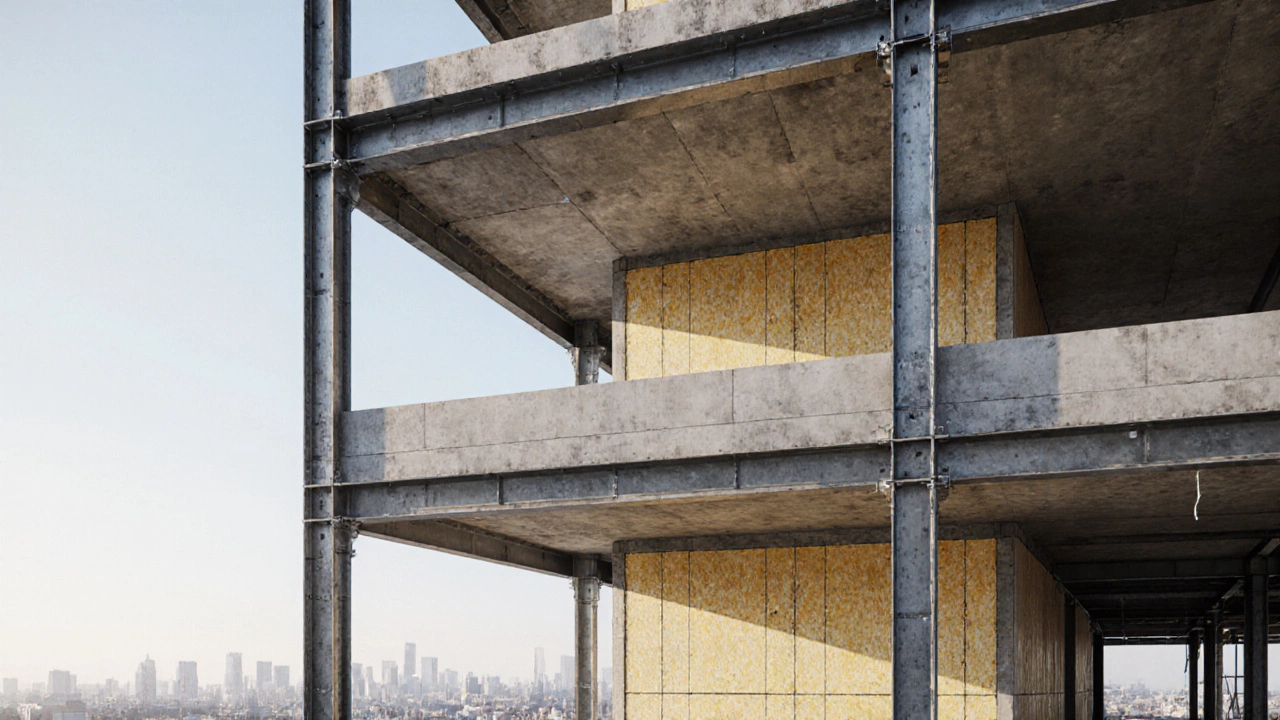Structural Steel: What It Is, How It’s Used, and Why It Matters in Modern Building
When you see a tall office building, a bridge, or a big warehouse, what you’re really seeing is structural steel, a high-strength steel profile designed to carry loads in buildings and infrastructure. Also known as steel frames, it’s the hidden skeleton that keeps modern construction standing—strong, precise, and built to last. Unlike concrete or wood, structural steel doesn’t sag over time, doesn’t rot, and can be shaped into just about any form you need. It’s not just a material—it’s a system. And it’s the reason why buildings today can reach 50, 80, even 100 stories high without collapsing under their own weight.
Structural steel works because it’s engineered for one thing: strength-to-weight ratio. A steel beam that’s only 12 inches tall can support the same load as a concrete column that’s 3 feet wide. That’s why it’s the go-to for commercial construction, projects like offices, factories, and retail centers that need large open spaces without interior walls. It’s also why you’ll find it in steel frames, the interconnected network of beams and columns that form the load-bearing structure of a building. These frames are assembled off-site in precise factory conditions, then bolted or welded together on-site. That means faster builds, fewer workers needed on-site, and less weather delay.
But structural steel isn’t just about height or speed. It’s about flexibility. You can add floors later. You can open up spaces without tearing down walls. You can even retrofit old buildings by adding steel supports to handle new loads. That’s why it’s so common in renovations and loft conversions—where you need to support extra weight without compromising the original structure. And when it comes to fire safety, modern structural steel is coated or encased to meet strict building codes, making it one of the safest options for large-scale projects.
What you won’t find in most guides is how often structural steel gets misused—or overused. Some builders pick it just because it’s trendy, not because it fits the job. In smaller homes or low-rise buildings, it’s often overkill. Concrete or timber might be cheaper and just as strong. But when you need long spans, heavy loads, or quick assembly? Structural steel is the only real choice. That’s why nearly every major commercial project in the last 50 years has relied on it.
Below, you’ll find real-world breakdowns of how structural steel is used in different projects—from cost comparisons in UK builds to the materials behind commercial building codes. You’ll see what goes into steel frames, how they affect renovation budgets, and why some builders avoid them altogether. Whether you’re planning a new build, fixing an old one, or just trying to understand what holds your office building up, this collection gives you the facts—not the fluff.
Understanding Type C Construction in Commercial Buildings
Learn what Type C construction means, how it differs from Types A and B, code rules, material choices, costs, and a practical checklist for commercial projects.
Learn more...